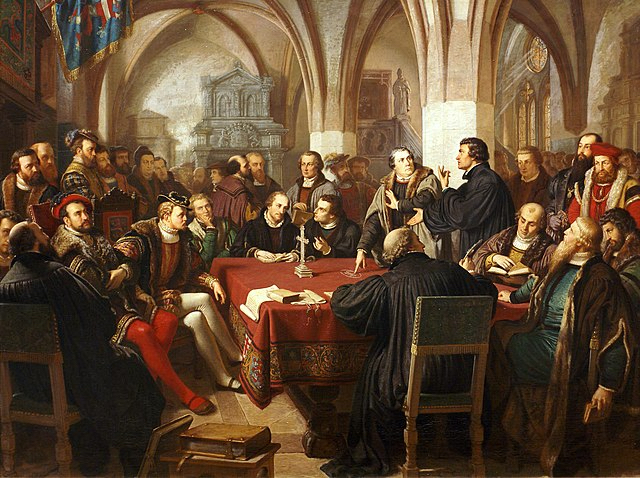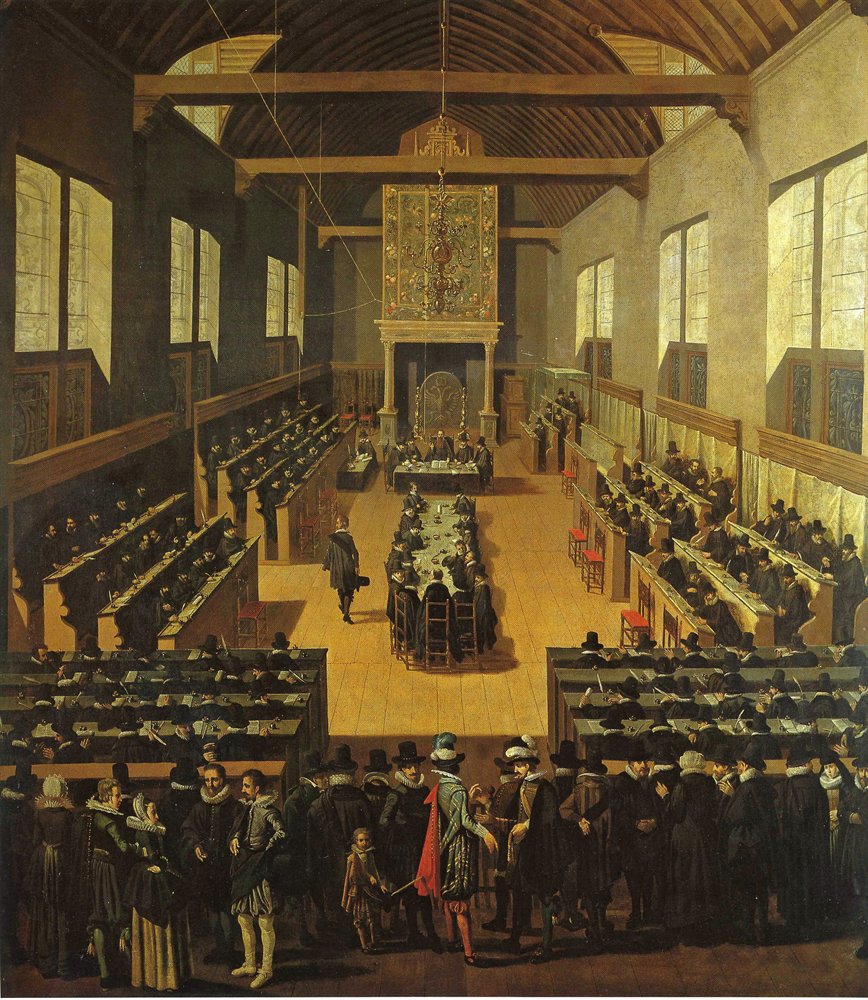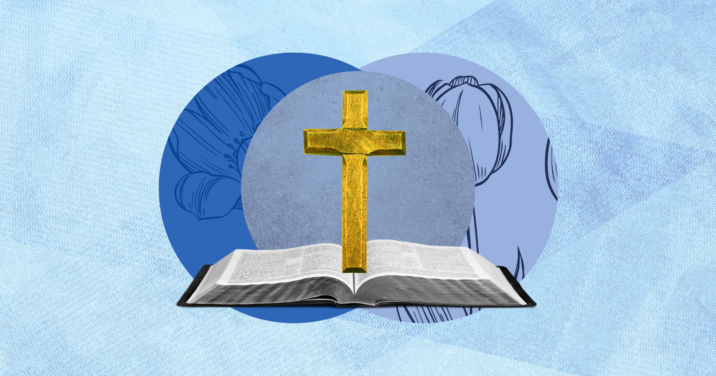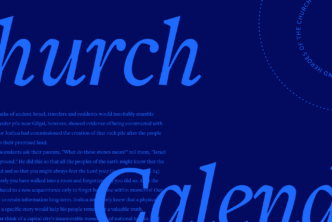“What is Reformed theology?” In the land where the Azusa Street Revival, International Church of the Foursquare Gospel, Calvary Chapel, and Saddleback Church had their birth and continue their influence, I cannot tell you how many times I’ve been asked this question by people with puzzled looks on their faces.
Only after baptism as a Roman Catholic, conversion in a Foursquare Church, education at an Assemblies of God college, spending 1–2 weeknights per week at Calvary Chapel Costa Mesa, and pastoral ministry in a nondenominational Pentecostal church did I learn about this thing called “the Protestant Reformation.” I look forward to introducing you to “Reformed theology” as one of its ministers and teachers.1
Table of contents
Reformed theology: an overview
Roots of Reformed theology
The difficulty of defining Reformed theology
Core beliefs of Reformed theology
What are the main Reformed denominations?
Who are some prominent Reformed theologians?
Reformed theology: an overview
Reformed theology is a theological tradition of the sixteenth century Protestant Reformation that developed in response to centuries of calls for reform of the abuses in the Roman Catholic Church. It’s important to note that, contrary to popular assumptions, the root of the word “Protestant” does not mean “protest.” The Latin protestatio meant “a public declaration or testimony.”2 In other words, to be Protestant was to confess certain truths.

Marburg and Montbéliard
The “Reformed” constitute one of the major branches of Protestantism—only one, because, sadly, the two largest early Protestant groups could not achieve and maintain unity. Here’s what happened.
These two major reform movements appeared to be on the verge of linking arms. Martin Luther (1483–1546) and others traveled from Wittenberg in Saxony while Ulrich Zwingli (1484–1531) and others traveled from the Swiss canton of Zurich to Marburg Castle in Hesse for a Colloquy October 1–4, 1529. They wrote up fifteen articles of agreement on the Trinity, Christ, original sin, redemption, the gift of faith, justification by Christ’s righteousness, preaching, baptism as means of regeneration, good works, confession as a free act of Christians, civil government, issues of tradition, the baptizing of children. They also agreed that both bread and wine were to be eaten for the spiritual reception of Christ. Yet this final article ended with disagreement:
Although we have not at this time agreed whether the true body and blood of Christ are bodily in the bread and wine, each side is able to display Christian love to the other. … Both sides are praying diligently to Almighty God, that he would confirm us in the right understanding through his Spirit. Amen.3
The result of the Marburg Colloquy was that these two parallel Protestant movements continued to be distinct. Both of them can be described as “Reformation” theology, but only one of this goes by the name “Reformed.” We know these two groups by the names with which they were slandered.
- There were the “Lutherans,” who called themselves “evangelicals.”
- And there were the “Calvinists,” who called themselves “the churches reformed according to the Word of God.”4
While attempts were made by the Reformed after 1529 and into the 1600s to unite with the Lutherans, this one doctrinal disagreement at Marburg over how exactly Christ is present in the Lord’s Supper led to further disagreements.
It’s helpful to ask, how is Reformed theology different from Lutheran theology? One way to illustrate the differences is the Colloquy of Montbéliard in 1586. This was a meeting between Lutheran theologians, especially Jakob Andreae (1528–90), and Reformed theologians, especially Theodore Beza (1519–1605). Not only was the manner of Christ’s presence in Communion still a disagreement, but the disputants also had multiple other disagreements. They disagreed over how the two natures of Christ (divine and human) relate to his one Person, over the relationship of regeneration to baptism, over predestination and the status of the non-elect (the “reprobate”), and even over issues of church worship such as images of Christ and organ music.5
Despite these disagreements, the Reformed side of the Protestant Reformation spread throughout Europe: from the Swiss cantons and up north to German-speaking regions of the Holy Roman Empire, then west to the Netherlands and France, then over the English Channel or North Sea to England and Scotland, and then as far east as Hungary and Transylvania.
Roots of Reformed theology
Where did this Reformed side of the Reformation come from?
Scripture
With all historic Christians, Eastern and Western, we receive the Old and New Testaments as the Word of God. It’s from this fertile soil that the church’s roots grew deep, causing its branches to spread across the ancient world.
Ancient church
All historic Christians, Eastern and Western, also want to claim the mantle of “catholic,” being inheritors of the ancient church and the early fathers of that church. We do too.
Creeds and councils
Along with historic Western and Eastern Christians, Reformed Christians receive, believe, and confess the Nicene (or Nicene-Constantinopolitan) Creed (325/381) and the Definition of Chalcedon (451).
Along with historic Western Christians, we receive, believe, and confess the undated Apostles’ and Athanasian Creeds.
To sum up the roots of Scripture, creeds, and councils,
We freely profess, whatsoever things are defined out of the Holy Scriptures, and comprehended in the creeds, and in the decrees of those four first and most excellent Councils held at Nicaea, Constantinople, Ephesus, and Chalcedon, together with blessed Athanasius’ Creed, and all other creeds like to these … we retain the Christian, sound, and catholic faith, whole and inviolable, knowing that noting is contained in the aforesaid creeds which is not agreeable to the Word of God. (Second Helvetic Confession, ch. 11)
Augustinianism
As the Latin-speaking, Western catholic church developed, Augustine’s (354–430) teaching prevailed against that of Pelagius. The Western church was a continual reading and applying of “Augustinianism” against Pelagianism on the doctrines of predestination apart from human merit and the bondage of the human will to sin apart from grace. This Augustinian inheritance was passed down the ages from the Council of Orange (529) to Peter Lombard (ca. 1096–1160), Thomas Aquinas (1225–74), Thomas Bradwardine (1300–49), and Gregory of Rimini (1300–58), whom Martin Luther relied on most in his 1519 Leipzig Debate with Johannes Eck.6
Late-Medieval reform movements
Before the advent of what we call “the Reformation,” there were many late-medieval calls for reform within the church—for theological reform, ecclesiastical reform, and surely for moral reform. The Avignon Papacy (1309–77) revealed the opulence of the bishop of Rome. The resultant Great Western Schism (1378–1417) revealed the crisis of leadership and featured rival popes in Avingnon and Rome—who were later joined by yet a third pope in Pisa! The Council of Constance (1414–18) resolved the Roman and Pisan papacies, though Avignon held to its anti-pope until 1429.
It is the beginning of wisdom to understand that the Reformation was not, in its own eyes, a novelty. The novelties were those grave distortions of the truth that had passed for truth in more recent centuries, and which we know as medieval Catholicism. Yet Luther was himself some kind of late medieval Catholic. And even to say harsh things about the supreme pontiff was itself part of the late medieval legacy.7
During these scandalous times, the English theologian John Wyclif (1328–84) asserted that all office holders in the church could have only temporal and limited jurisdiction, and that ecclesiastical offices could only be held by those in a state of grace. Therefore the pope, at best, was head of the Roman part of the visible church, not of all the elect. The Czech Reformer Jan Hus (1370–1415) followed in a similar fashion, even saying that when the pope lives in greed, contrary to Peter, he is not his successor but the vicar of Judas Iscariot. As a German priest said in 1451,
If the head is sick, the limbs also feel the pain. If reform is to be accomplished, it must begin with the pope and the Roman curia. It is the pope and the cardinals who daily commit the most fearful transgression and abuses.8
The difficulty of defining Reformed theology
It’s been said that “the term ‘Reformed theology’ itself is not one that is amenable to easy or quick definition.”9
Several factors contribute to this difficulty.
Popularly
Popularly, Reformed theology is sometimes defined in various ways.
- Some define it via the five solas: Scripture alone (sola Scriptura), grace alone (sola gratia), Christ alone (solus Christus or solo Christo), faith alone (sola fide), and the glory of God alone (soli Deo gloria).
- Some define it via the five points of Calvinism, commonly known via the acronym TULIP: total depravity, unconditional election, limited atonement, irresistible grace, and perseverance or preservation of the saints.
- Some see it as a biblical worldview, following the storyline of Scripture as teaching creation, rebellion, redemption, and consummation.
- Some define it via its alleged doctrinal distinctives, such as the all-encompassing, over-arching sovereignty of God in the world and salvation.
The problem with all of these efforts at definition is that they lose the historicity and catholicity of the Reformed tradition. For example, people ask me, “What are the 5 points of Calvinism,” or, “What are the 5 points of Reformed theology?” By the time of Jakob Hermanszoon/Jacobus Arminius (1560–1609), the Dutch Reformed Church already had the Belgic Confession’s (1561) 37 articles and the Heidelberg Catechism’s (1563) 129 questions and answers. That’s 166 points of theology. Arminius’s proposals led to a decade-long struggle after his death. In 1610, his followers wrote a “remonstrance” (formal protest) and were thus called “Remonstrants.” They were the original “five pointers” because they raised five points of specific protest. This led to the Synod of Dort (November 1618–May 1619). Its response was not the so-called “five points of Calvinism.” The Synod responded to the five points of the Remonstrants in Canons with five “heads” of doctrine, each containing numerous articles and rejections of errors:
| Remonstrance | Canons of Dort |
| Point 1: Predestination | Head 1: 18 articles & 9 rejections |
| Point 2: Christ’s Death | Head 2: 9 articles & 7 rejections |
| Point 3: Human Sin | Heads 3 &4 (combined; see below) |
| Point 4: God’s Grace | Heads 3 & 4: 17 articles & 9 rejections |
| Point 5: Perseverance | Head 5: 15 articles & 9 rejections |
The “five points of Calvinism” actually are 59 positive articles of belief plus 34 rejections of errors, or 93 doctrinal points. Combined with the aforementioned 166 points of theology, Reformed theology in the Dutch Reformed tradition is not 5 but 259 points!10
What Is Calvinism? A Simple Explanation of Its Terms, History & Tenets
Historically
The history of Reformed churches themselves makes summarizing Reformed theology difficult. If someone wants to know what the Roman Catholic Church believes, their authoritative pope and teaching magisterium has published a catechism. If someone wants to know what Lutherans believe, their catechisms and confessions were codified in 1580 as The Book of Concord.
Reformed theology, though, is a movement in which there is unity within diversity. Unlike the Lutheran tradition’s static confessional basis, the Reformed tradition is dynamic; it develops over history from the early Sixty-Seven Articles of Zwingli in 1523 to the Formula Consensus Helvetica in 1675. Throughout the centuries, every city, county, canton, and king that embraced the Reformed expression of the Reformation wrote its own catechisms and confessions of faith for their own people.11
These hundreds of confessional documents have substantial unity while allowing for a certain amount of diversity.
For example, if I said that Reformed theology was “confessional theology,” this would be true—but it would also raise the question: Which confession(s)? If you were in England before the civil war began in 1642 and after 1662 when the monarchy re-established supremacy over religion, this meant the Thirty-Nine Articles of Religion, which prescribes the ancient and medieval church structure of bishops, presbyters (priests), and deacons. At the same time, fellow Reformed believers in The Netherlands confess a presbyterial structure of ministers, elders, and deacons.
Ecclesiastically
Under the umbrella of Reformed theology are various church traditions. We have churches such as my own that self-identify as “Dutch Reformed,” or sometimes “Continental Reformed.” The rabble-rousing English really made Reformed theology an alphabet soup, as we have Anglican churches (bishops), Presbyterian churches (no bishops, but presbyteries), and congregational churches (neither of the previous, but local autonomous congregations). Yet all the above baptized children of believers. Baptists rejected this, though “Particular Baptists” adapted the Presbyterian Westminster Confession of Faith and Congregational Savoy Declaration to create its London Baptist Confession of Faith. Today these self-identify as Calvinistic or “Reformed Baptists.” Steven Wedgeworth recently wrote on the elasticity and development of the term “Calvinist” (which was historically a synonym for “Reformed”):
There are both paedobaptists and credobaptists who call themselves “Calvinists.” Presbyterians and congregationalists use the name. There are Calvinistic Anglicans. Calvinism has even become popular among a range of North American evangelicals who also affirm the continuation of charismatic gifts, contemporary worship styles, and modern views of arts and culture.
In all honesty, there is a contentious debate over the identity and nomenclature of “Reformed” as it relates to our “Reformed Baptist” brothers and sisters.12
While we share a great deal theologically and historically, as will be clear below, for the purposes of this article, I intend to leave “Reformed Baptists” to the side. One of their own stalwarts can defend their place among the Reformed.
“What is Reformed theology in simple terms?” It’s not so simple.
Core beliefs of Reformed theology
I can’t expect you to memorize all the Reformed catechisms and confessions! I need to outline some of the core beliefs of Reformed theology. To do so, I’ll rely on several key catechisms and confessions of faith to show the unity and diversity to which I’ve been referring. Why this method? At the conclusion of its canons, the Synod of Dort appealed:
With all who devoutly call on the name of our Savior Jesus Christ to form their judgment about the faith of the Reformed churches, not on the basis of false accusations gathered from here or there, or even on the basis of the personal statements of a number of ancient and modern authorities—statements which are also often either quoted out of context or misquoted and twisted to convey a different meaning—but on the basis of the churches’ own official confessions … 13
Reformed theology is catholic theology
I was recently asked, “What is another name for Reformed theology?” I could’ve answered: “Calvinism” or “covenant theology.” Yet, I answered “Reformed catholic theology.”14
From the Greek term katholikos, meaning, “general, universal,” the word “catholic” became a description for the church in the second century. Ignatius of Antioch (d. ca. 108) famously said, “Wherever Jesus Christ is, the catholic church is there.”15
Two centuries later, Cyril of Jerusalem (313–86) elaborated:
The Church is called catholic because it is spread throughout the world, from end to end of the earth; also because it teaches universally and completely all the doctrines which man should know concerning things visible and invisible, heavenly and earthly; and because it subjects to right worship all mankind, rulers and ruled, lettered and unlettered; further because it treats and heals universally every sort of sin committed by soul and body, and it possesses in itself every conceivable virtue, whether in deeds, words or in spiritual gifts of every kind.16
Reformed theologians believed they were merely repeating “catholic” theology:
- John Calvin (1509–64) wrote to King Francis I of France:
If the contest were to be determined by patristic authority, the tide of victory—to put it very modestly—would turn to our side.”17
- Heinrich Bullinger (1504–75) described Reformed theology as “The Old Faith,” since God’s salvation of sinners by grace alone through faith alone in the Savior to come alone was the faith of Adam.18
- Puritan William Perkins (1558–1602) wrote a treatise entitled, “A Reformed Catholic,” comparing and contrasting Reformed with Roman Catholic Church theologies.19
- Guido de Brès (1522–67) appended to the Belgic Confession a letter for King Philip II of Spain, on behalf of the 100,000 Reformed believers in the Low Countries, concerning their catholicity:
We not only uphold and profess the chief heads of the Christian faith, comprehended in the Symbolum or Creeds, but also the whole teaching, revealed by Jesus Christ, for our life, justification and salvation, proclaimed by the evangelists and apostles, sealed with the blood of so many martyrs and preserved pure and complete by the primitive Church.20
- Wilhelmus à Brakel (1635–1711) said the name “Reformed” didn’t refer to doctrine as if the Reformed churches changed or improved Christian doctrine since they taught the truth of the Word as the Fathers taught. Instead, “Reformed” was in reference to the Roman Catholic Church; in other words, “Reformed” meant Reformed Catholic. This is why he said don’t call us “Calvinists!” Calvin is not the head of the church, we don’t follow his prescriptions, and we don’t magnify a mere man.21
Trinitarian doctrine of God
Accepting the catholic inheritance of the ancient creeds and councils, Reformed theology is Trinitarian: “Now this is the catholic faith: that we worship one God in Trinity and the Trinity in unity.”22
This inheritance comes down to us from the most ancient of sources, the Torah of Moses: “Hear, O Israel: The LORD our God, the LORD is one” (Deut 6:4). Thus we wholeheartedly “believe in our hearts and confess with our mouths that there is a single and simple spiritual being, whom we call God … , the overflowing source of all good.”23 He is “one in essence or nature, subsisting in Himself, all sufficient in Himself.”24 At the same time, “in [this one God] there are three persons, really, truly, and eternally distinct according to their incommunicable properties—namely, Father, Son, and Holy Spirit.”25
Doctrine of Scripture
In accord with the most ancient councils of Rome (382), Hippo (393), and Carthage (397, 419), Reformed theology accepts the thirty-nine books of the Old Testament and twenty-seven of the New as the inspired, canonical, and authoritative Word of God, “of whose authority was never any doubt in the Church.”26 Following the ancient fathers Augustine and Jerome, and in contrast to Rome, these books alone are received while the apocryphal books “the Church doth read for example of life and instruction of manners; but yet doth it not apply them to establish any doctrine.”27 “They do not have such power and virtue that one could confirm from their testimony any point of faith or of the Christian religion.”28
In contrast to Rome’s insistence on the equal authority of its traditions, Scripture alone contains the will of God completely and that everything one must believe to be saved is sufficiently taught in it”29 and “whatsoever is not read therein, nor may be proved thereby, is not to be required of any man, that it should be believed as an article of the Faith, or be thought requisite or necessary to salvation.”30
Doctrine of sin
Following Augustine, original sin is not merely following the sin of Adam “as the Pelagians do vainly talk,” but is “the fault and corruption of the Nature of every man.” Because of this, “man is very far gone from original righteousness, and is of his own nature inclined to evil, so that the flesh lusteth always contrary to the Spirit; and therefore in every person born into this world, it deserveth God’s wrath and damnation.”31
An Augustinian doctrine of original sin has effects on human free will: man “cannot turn and prepare himself, by his own natural strength and good works, to faith; and calling upon God.”32 In a word, “man is nothing but the slave of sin.”33
Doctrine of Christ
On the person of Christ, Reformed theology places an emphasis on the creedal and catholic inheritance of the Definition of Chalcedon (451) that the two natures (divine and human) exist in the one Person “inconfusedly” and “unchangeably” (contra Euchychianism) as well as “indivisibly” and “inseparably” (contra Nestorianism).
This is where intra-Protestant polemics with Lutheranism reared its head. While Luther left the question of the way “the true body and blood of Christ are bodily in the bread and wine” unanswered at Marburg, later Lutherans explained it by saying the human nature of Christ partook of certain attributes of the divine nature, such as omnipresence. Thus, Christ’s human flesh and blood can be everywhere. One response is found in the (Reformed) Heidelberg Catechism, which devotes one question and answer to the central Christian truth of Christ’s resurrection (Q&A 45), but four to his ascension (Q&A 46–49). “But isn’t Christ [meaning the Person] with us until the end of the world as he promised us?” The answer is virtually a quotation of Augustine’s sermon on John 12:8 (Tractate on John 50): “Christ [the one Person] is true man and true God [he has two natures]. In his human nature Christ is not now on earth; but in his divinity, majesty, grace, and Spirit he is never absent from us.”34 In answer to the Lutheran objection that Reformed Christology separated the two natures of Christ (just like ancient Nestorianism did, which was condemned by the aforementioned Council of Chalcedon in 451), we read:
Certainly not. Since divinity is not limited and is present everywhere, it is evident that Christ’s divinity is surely beyond the bounds of the humanity that has been taken on, but at the same time his divinity is in and remains personally united to his humanity.35
On the work of Christ, the emphasis is on his fulfilling the three Old Testament offices of prophet, priest, and king.36 As priest, he accomplished the work of redemption in his active obedience to the law and passive obedience in his sufferings. A key point on his passive obedience is the distinction Peter Lombard (1096–1160) passed down from the ancients through the medievals, emphasizing the sufficiency of the death of Christ for all: “It is of infinite value and worth, more than sufficient to atone for the sins of the whole world.”37 Alongside this, was the efficiency/efficaciousness of his death for the elect: “It was God’s will that Christ through the blood of the cross … should effectively redeem from every people, tribe, nation, and language all those and only those who were chosen from eternity to salvation and given to him by the Father.”38
Doctrine of salvation
Predestination
Following the Augustinian tradition, Reformed theology teaches God’s purpose of predestination in electing to salvation. This purpose is eternal, unchangeable, entirely gracious and not based on anything in humans. It is rooted in the good pleasure of God’s own will to share life, love, and glory with man.39 Predestination is also in Christ: “Let Christ, therefore, be our looking glass, in which we may behold our predestination.”40
This leads to a question: “Does Reformed theology teach ‘double predestination’?” If you listen merely to social media, the answer you’ll hear is yes. Lutherans, especially, are keen to say this about us, as it brings with it visions of God doing evil.
- If “double predestination” means that God chooses some to salvation and positively chooses the rest to damnation, then I can confidently say that no Reformed catechism or confession says this. In fact, the official public statements of Reformed belief say less than Martin Luther said in his Bondage of the Will, where God’s sovereign will is equally ultimate in who believes and who doesn’t.
- Some Reformed confessions are silent on this subject, emphasizing only election to salvation41 while others state them both, but not in an equally ultimate way. For example, the Belgic Confession speaks of God revealing himself to be “just in leaving the others in their ruin and fall into which they plunged themselves.”42
- Even at the Synod of Dort, where this issue had to be debated and dealt with more comprehensively due to the inflamed rhetoric of the Remonstrants, we find the answer to the issue of “reprobation” in line with late medieval debates on the subject: “Some have not been chosen or have been passed by in God’s eternal election.” This is not “double predestination.” God “positively” elected some to salvation. Others he “passively” decided “to leave … in the common misery into which, by their own fault … have plunged themselves.” By means of “privation” or not giving, God decided to “not to grant … saving faith and the grace of conversion.” And even when the Canon mentions God’s decision “finally to condemn and eternally punish,” it is on the basis of “their unbelief but also for all their other sins.” This was to protect the justice of God from any charge that he was the author of sin.43
Justification
The doctrine of justification, or how sinners can stand acceptable before the righteous judgment of God, was the soteriological issue that divided the Reformers from Rome. This is where those “solas” come in handy, as we say that God accepts sinners because in his grace alone he has provided us a savior in Jesus Christ, and on the basis of the work of Christ alone we receive his righteousness by faith alone. Justification is an act of God towards us, not a process of actions we do to move towards God. In other words, we’re not justified after being sanctified. This is stupendous news!44
Doctrine of the church
Polity
The Reformed churches greatly simplified their “polity” or governing structure—even in the case of the English church, which kept the medieval bishoprics. As mentioned before, this is a genuine area of intramural debate and diversity within Reformed theology. We have episcopal45, presbyterial46, and congregational churches47 within the Reformed branch of the church. Yet the churches esteemed one another as true churches—so much so that at the Synod of Dort, the English delegates were given the best seats and even a canopy signifying the honor due to their bishop in attendance (see image below).

Worship
While not the “radical reformation” of the Anabaptist movement, Reformed theology definitely has a more simplified view of worship in comparison to Rome and even Lutherans. Yet this exists on a scale, with English/Thirty-Nine Articles worship looking more like medieval worship, Dutch Reformed/Belgic Confession and Heidelberg Catechism being less so, Presbyterian/Westminster Confession and Catechisms being even less than that, while Congregational/Savoy Declaration churches such as those of John Owen being the most simplified in their liturgy.48 For example, Anglicans have the Book of Common Prayer, Dutch Reformed have set liturgies (“forms”) and prayers but not an entire book, Presbyterians had a non-prescribed description in its Directory for the Public Worship of God, while Congregationalism had no set forms, liturgies, or prayers whatsoever.
Baptism
With the entirety of the Western Augustinian tradition, we as Reformed catholics baptize children of believers (with the exception of the London Baptist Confession) and converts to the faith.
Versus Rome, Reformed theology does not believe baptism conveys initial justification.
Versus Lutheranism, we say “the efficacy … is not tied to that moment of time wherein it is administered.”49 For us, there is the outward sign of water and thing inward thing signified, meaning the washing away of sin and renewing work of the Holy Spirit. Like circumcision, baptism brings us into the community of God’s people and separates and sanctifies us from the unbelieving world, but we leave it to God, in his grace, to decide when the full benefits are applied.50
Communion
With Luther, we stand opposed to Rome’s doctrine of transubstantiation (the substance of bread and wine is changed into the substance of Christ’s flesh and blood). We say it “cannot be proved by Holy Writ; but is repugnant to the plain words of Scripture, overthroweth the nature of a Sacrament, and hath given occasion to many superstitions.”51 We believe “the Mass is basically nothing but a denial of the one sacrifice and suffering of Jesus Christ and a condemnable idolatry.”52
Versus Luther, we believe this is an intramural debate over how we eat Christ’s body and blood. We believe we do participate in the body and blood, in a real and substantial manner: “We do not go wrong when we say that what is eaten is Christ’s own natural body and what is drunk is his own blood.”53 Our reception is through faith by the wonderful working of the Holy Spirit who communicates Christ to us mysteriously so that our souls are nourished and refreshed unto eternal life.54
What are the main Reformed denominations?
Speaking strictly here in North America, of those who adhere to the historic catechisms and confessions and are considered conservative, the North American Presbyterian and Reformed Council (NAPARC), consists of:
Dutch Reformed
- Canadian Reformed Churches (CanRC)
- Free Reformed Churches of North America (FRCNA)
- Heritage Reformed Congregations (HRC)
- United Reformed Churches in North America (URCNA)
French Reformed
- Reformed Church of Quebec (Église réformée du Québec) (ERQ)
German Reformed
- Reformed Church in the United States (RCUS)
Presbyterian
- Associate Reformed Presbyterian Church (ARP)
- Korean American Presbyterian Church (KAPC)
- Korean Presbyterian Church in America (Kosin) (KPCA)
- Orthodox Presbyterian Church (OPC)
- Presbyterian Church in America (PCA)
- Presbyterian Reformed Church (PresRC)
- Reformed Presbyterian Church of North America (RPCNA)
Who are some prominent Reformed theologians?
- Thomas Cranmer (1489–1556): architect of the English Reformation, creator of the Book of Common Prayer.
- Heinrich Bullinger (1504–75): successor of Zwingli, author of The Decades.
- John Calvin (1509–64): Frenchmen whose entire ministry was spent outside his homeland in Geneva (with a short “exile” in Strasbourg), most known for his Institutes of the Christian Religion and his commentaries on 48 books of the Bible.
- Gijsbert Voet/Gisbertus Voetius (1589–1676): The youngest delegate at the Synod of Dort, the dominant figure in the seventeenth century Dutch Reformed Church, known for his works versus René Descartes (1596–1650).55
- John Owen (1616–83): Arguably the greatest English theologian of the 17th century; Congregationalist, known for his works on the Holy Spirit, Hebrews, and Communion with God.
- Petrus van Mastricht (1630–1706): Magisterial work of Dutch Reformed Orthodoxy and piety entitled, Theoretical–Practical Theology.
- Charles Hodge (1797–1878): Princeton theologian, Presbyterian, known for his 3-volume Systematic Theology.
- B. B. Warfield (1851–1921): Princeton theologian, Presbyterian, known for The Inspiration and Authority of Scripture.
- Herman Bavinck (1854–1921): Theologian of the Neo-Calvinist movement centered at the Free University of Amsterdam, known for his Magnolia Dei (The Wonderful Works of God) and 4-volume Reformed Dogmatics.
- J. I. Packer (1926–2020): English-born, Canadian Anglican theologian, known for Knowing God, Concise Theology, and A Quest for Godliness.
Related articles
- The Definitive Guide to Christian Denominations
- What is Calvinism? A Simple Explanation of Its Terms, History & Tenets
Recommended resources
Reformed Confessions of the 16th and 17th Centuries in English Translation (4 vols.)
Regular price: $149.99

- See also my Welcome to a Reformed Church: A Guide for Pilgrims (Sanford, FL: Reformation Trust, 2010).
- See Dictionary of Medieval Latin from British Sources, s.v. “protestatio.”
- Sources and Contexts of The Book of Concord, ed. Robert Kolb and James A. Nestingen (Minneapolis: Fortress Press, 2001), 91.
- Die nach Gottes Wort reformierten Kirchen.
- On this Colloquy, its issues, and how they continue to divide Lutherans and the Reformed, see Jill Raitt, The Colloquy of Montbéliard: Religion and Politics in the Sixteenth Century (Oxford: Oxford University Press, 1993), and Jakob Andreae and Theodore Beza, Lutheranism vs. Calvinism: The Classic Debate at the Colloquy of Montbéliard 1586, ed. Jeffrey Mallinson, trans. Clinton J. Armstrong (St. Louis, MO: Concordia Publishing House, 2017).
- See Heiko Oberman, Forerunners of the Reformation: The Shape of Medieval Thought Illustrated by Key Documents (NY: Holt, Rinehart and Winston, 1966).
- Patrick Collinson, The Reformation (London: Phoenix, 2005), 14.
- Cited in Collinson, Reformation, 24.
- Paul T. Nimmo and David A. S. Ferguson, “Introduction,” in The Cambridge Companion to Reformed Theology, eds. Paul T. Nimmo and David A. S. Ferguson (Cambridge: Cambridge University Press, 2016), 1.
- On the Synod and Canons of Dort, see Daniel R. Hyde, Grace Worth Fighting For: Recapturing the Vision of God’s Grace in the Canons of Dort (Lincoln, NB: The Davenant Institute, 2019).
- See Reformed Confessions of the 16th and 17th Centuries in English Translation, ed. James T. Dennison, 4 vols. (Grand Rapids: Reformation Heritage Books, 2008–2014).
- See Matthew C. Bingham, Chris Caughey, R. Scott Clark, Crawford Gribben, and D. G. Hart, On Being Reformed: Debates over a Theological Identity, ed. Christianities in the Trans-Atlantic World (Cham, Switzerland: Palgrave Macmillan, 2018).
- As found at https://threeforms.org/canons-of-dort/#false_accusations (Accessed September 20, 2023).
- For a modern example of what follows, see “A Reforming Catholic Confession: A ‘Mere Protestant’ Statement of Faith to mark the 500th anniversary of the Reformation.”
- Letter to the Smyrnæans, 8.2, in trans. Rick Brannan (Bellingham, WA: Lexham Press, 2017), 113.
- Lenten Lectures (Katēchēseis) 18.23, in The Works of Saint Cyril of Jerusalem: Volume 2, trans. Leo P. McCauley, S.J., The Fathers of the Church: A New Translation 64 (Washington, DC: Catholic University of America Press, 1970), 132. The word “catholic” in the first line has been left lowercase in accordance with the intentions of Irenaeus.
- John Calvin, “Prefatory Address to King Francis I of France,” in Institutes of the Christian Religion, ed. John T. McNeill, trans. Ford Lewis Battles, 2 vols. (Philadelphia: The Westminster Press, 1960), 1:18. For Calvin’s use of the fathers, see Anthony N. S. Lane, John Calvin: Student of the Church Fathers (Grand Rapids: Baker, 1999).
- See Cornelis P. Venema, “Heinrich Bullinger’s Der Alt Gloub (‘The Old Faith’): An Apology for the Reformation,” Mid-America Journal of Theology 15 (2004): 11–32.
- William Perkins, A Reformed Catholic in The Works of William Perkins: Volume 7, eds. Shawn D. Wright and Andrew S. Ballitch (Grand Rapids: Reformation Heritage Books, 2019), 1–167.
- Cited in Daniel R. Hyde, With Heart and Mouth: An Exposition of the Belgic Confession (Granville, MI: Reformed Fellowship, 2008), 502.
- The Christian’s Reasonable Service, trans. Bartel Elshout, ed. Joel R. Beeke, 2 vols. (Grand Rapids: Reformation Heritage Books, 1993), 2:20.
- Athanasian Creed, line 3.
- Belgic Confession, art. 1.
- Second Helvetic Confession, art. 3
- Belgic Confession, art. 8.
- Thirty-Nine Articles, art. 6.
- Thirty-Nine Articles, art. 6.
- Belgic Confession, art. 6.
- Belgic Confession, art. 6.
- Thirty-Nine Articles, art. 6.
- Thirty-Nine Articles, art. 9.
- Thirty-Nine Articles, art. 9.
- Belgic Confession, art. 14.
- Heidelberg Catechism, Q&A 47.
- Heidelberg Catechism, Q&A 48
- Heidelberg Catechism, Q&A 31; Westminster Shorter Catechism, Q&A 23–26.
- Canons of Dort, 2.3
- Canons of Dort, 2.8.
- Belgic Confession, art. 16; Canons of Dort, 1.7; Thirty-Nine Articles, art. 17.
- Second Helvetic Confession, art. 10.
- Heidelberg Catechism, Q&A 54; Thirty-Nine Articles, art. 17
- Belgic Confession, art. 16.
- Canons of Dort 1.15.
- Belgic Confession, arts. 20–23; Heidelberg Catechism, Q&A 59–62; Thirty-Nine Articles, art. 11–13.
- Thirty-Nine Articles, art. 36.
- Belgic Confession, arts. 30–31.
- Savoy Declaration, “Of the Institution of Churches, and the Order Appointed in Them by Jesus Christ;” Second London Baptist Confession of Faith, ch. 26.
- On the worship of Owen, see Daniel R. Hyde, “‘These are the Times’: Public Worship as Manifestation of a New Age of Theo-Politics in the Theology of John Owen,” PhD dissertation, Vrije Universiteit Amsterdam, 2022.
- Westminster Confession of Faith, ch. 28.6.
- Belgic Confession, arts. 33–34; Heidelberg Catechism, Q&A 66–74; Second Helvetic Confession, ch. 20.
- Thirty-Nine Articles, art. 28
- Heidelberg Catechism, Q&A 80.
- Belgic Confession, art. 35.
- Belgic Confession, art. 35; Heidelberg Catechism, Q&A 75–79; Thirty-Nine Articles, art. 28.
- See Aza Goudriaan, Reformed Orthodoxy and Philosophy, 1625–1750. Gisbertus Voetius, Petrus van Mastricht, and Anthonius Driessen, Brill’s Series in Church History 26 (Leiden: Brill, 2006); Andreas J. Beck, Gisbertus Voetius (1589–1676) on God, Freedom, and Contingency: An Early Modern Reformed Voice (Leiden: Brill, 2021).








